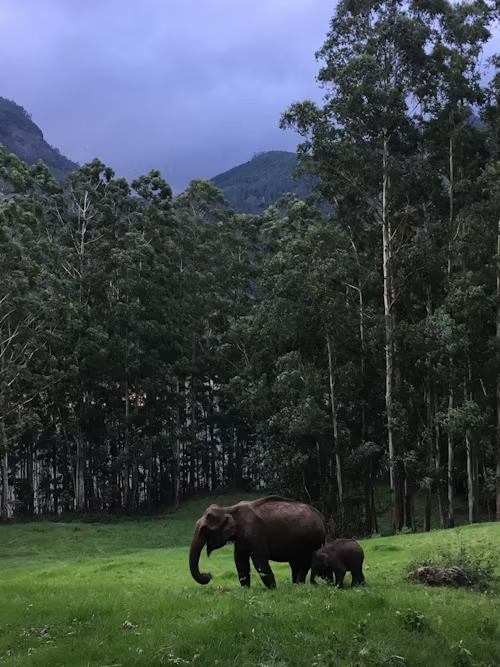Wayanad: Wild elephant population in Kerala steeply declined by 7 percent, the Forest Minister AK Saseendran said. While the elephant population is stable in Periyar and Nilambur elephant reserves (ERs), the elephant population in the other two ERs, namely Wayanad and Anamudi, has shown a noticeable decline. If in Nilambur the decline is 12 percent, it is 29 percent in Wayanad.
The findings were made in the report of the ‘Synchronised Elephant Population Estimation – 2024’ that was released in Thiruvananthapuram on Tuesday by the forest minister. The synchronized elephant estimation was carried out simultaneously in Karnataka, Tamil Nadu, and Kerala on May 24, 25, and 26 this year.
The block count method was used for the process. Throughout Kerala, 608 sample blocks covering 3499.52 square kilometers were selected for the purpose. During the three days, 652 elephants were recorded in 233 sightings. The density of elephants in the state was thus estimated to be 0.19 per sq km and from this, through a process of extrapolation, it was concluded that the number of wild elephants across Kerala is 1793.

Photo: Sunil Arora
This suggested a drop of 6.61 percent from last year when 1920 wild elephants were recorded. In 2023, the wild elephant density was also marginally higher, at 0.20 per sq km
As the bane for elephants trespassing into the human settlements, the forest minister used the latest findings of a decrease in their number, to debunk the notion that the increase in population in the elephant reserves, and the consequent dwindling of space and increased competition for food, that was prompting wild elephants to encroach into human settlements.
“Now, it is clear that the wild elephant population has not decreased,” Saseendran said. “But this does not take away the urgency of wildlife attacks along forest fringes and we will do all that is possible to save human lives,” the minister said.
n the case of Periyar and Nilambur, there was a marginal increase in the elephant population. If the estimated Nilambur population was 171 last year, it was 198 this year. In Periyar, the largest reserve, the pachyderm population was almost the same; 811 in 2023 and 813 in 2024.
According to the report, the stable populations in Periyar and Nilambur could be attributed to the undulating topography along the interstate borders, which has traditionally prevented elephants from moving freely between states. Further, it was said that the Periyar ER offered a better habitat for elephants than the neighboring Tamil Nadu, enough inducement to stay put.
However, it is different for elephants in Wayanad and Anamudi. In Anamudi, the population fell from 696 to 615. In Wayanad, the number came down quite alarmingly to 178 from 249. The report attributes the fall to poor availability of water and the gentle sloping terrain of these reserves that allows elephants to frequently move between borders.
The sizable drop of 29 percent in Wayanad ER has been chalked up to “the exceptional climate conditions this year” in which extremely dry weather was quickly followed by heavy summer rains. “Wayanad ER is surrounded by prime elephant habitats in the adjoining forests of Mudumalai, Bandipore and Nagerhole tiger reserves and the flat terrain facilitates easy movement of the elephants between states,” the report states.
This movement of elephants towards Wayanad during the dry season and the reverse movement after the rains when all seasonal ponds and water bodies get filled up on the other side has been well documented.
Between 2015 and 2023, the Kerala Forests and Wildlife Department recorded 845 elephant deaths, indicating a significant increase in the death rate over time, with a greater mortality rate in 2023.
The analysis revealed that there was a noticeable decrease in the death rate as age increased, with the age group under 10 years old having the highest mortality rate (about 40 percent) which can be attributed to Elephant Endotheliotropic Herpesviruses (EEHVs) that have coexisted with elephants for millions of years.
Studies in Sri Lanka revealed that elephant calves in larger herds tend to have a better chance of survival against EEHV compared to those in smaller herds.
This is because calves in larger herds benefit from shared immunity through exposure to different strains of the virus from other elephants. This exposure helps them develop antibodies to fight off the virus more effectively.
Hence, to prevent EEHV-HD from becoming a major threat to free-ranging Asian elephants, the report states that it is critical to protect and, where possible, restore natural habitats and avoid future fragmentation of free-living elephant herds


